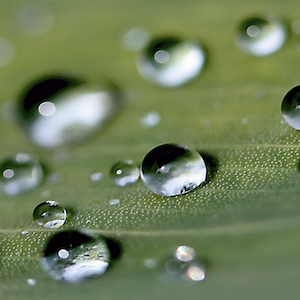On evaluating the hypothesis of shape similarity between soil particle-size distribution and water retention function

All claims expressed in this article are solely those of the authors and do not necessarily represent those of their affiliated organizations, or those of the publisher, the editors and the reviewers. Any product that may be evaluated in this article or claim that may be made by its manufacturer is not guaranteed or endorsed by the publisher.
Authors
Two pedotransfer functions (PTFs) are available in the literature enabling the soil water retention function (WRF) to be estimated from knowledge of the soil particle-size distribution (PSD), oven-dry soil bulk density (rb), and saturated soil water content (qs): i) the Arya and Heitman model (PTF-AH), and ii) the Mohammadi and Vanclooster model (PTF-MV). These physicoempirical PTFs rely on the hypothesis of shape similarity between PSD and WRF, and do not require the calibration of the input parameters. In the first stage, twenty-seven PSD models were evaluated using 4,128 soil samples collected in Campania (southern Italy). These models were ranked according to the root mean square residuals (RMSR), corrected Akaike information criterion (AICc), and adjusted coefficient of determination (R2adj). In the second stage, three subsets of PSD and WRF data (DS-1, DS-2, and DS-3), comprising 282 soil samples, were used to evaluate the two PTFs using the best three PSD models selected in the first stage. The hypothesis of shape similarity was assumed as acceptable only when the RMSR value was lower than the field standard deviation of the WRFs (s*), which is viewed as a tolerance threshold and computed from the physically based scaling approach proposed by Kosugi and Hopmans (1998). In the first study area (DS- 1), characterized by a fairly uniform, loamy textured volcanic soil, the PTF-AH outperformed the PTF-MV and both PTFs provided reasonable performance within the acceptance threshold (i.e., RMSR < s*). In the other two heterogeneous field sites (DS-2 and DS-3, characterized by soil textural classes that span from clay and clay-loam to loam and even sandy-loam soils), the PTF-MV (with 3% to 6% RMSR surpassing s*) outperformed the PTF-AH (with 8% to 30% RMSR surpassing s*) and the majority of RMSR values were larger than those obtained in the original studies. The mean relative error (MRE) revealed that the PTF-MV systematically underestimates the measured WRFs, whereas the PTF-AH provided negative MRE values indicating an overall overestimation. The outcomes of our study provide a critical evaluation when using calibration-free PTFs to predict WRFs over large areas
How to Cite

This work is licensed under a Creative Commons Attribution-NonCommercial 4.0 International License.












